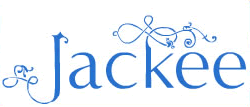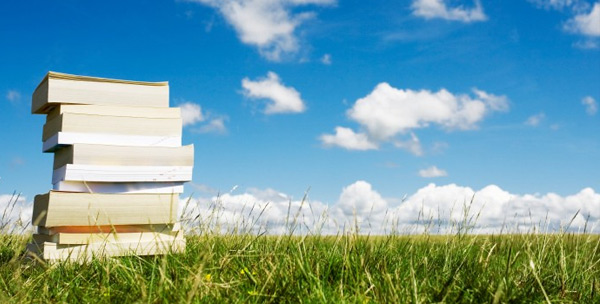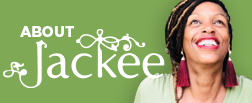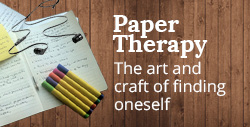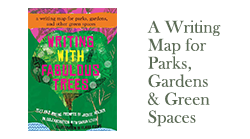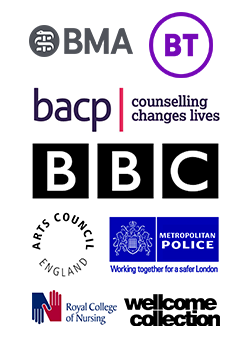Writing
Monday, January 4th, 2016

Today Michael Neil over at Supercoach.com shared a great tip for how to Love The Year Ahead in his weekly newsletter. It really resonated with me as his tips do every week. I love reading his Monday morning message on my way into work and they always leave me with stimulating food for thought or find me scrambling for my pen.
Here’s the link to his first newsletter of 2016 which is so on point. You can read the article in full here
Below, I’ve shared the great tips he outlines for doing more of what you do best in order to have not just a best year but an enjoyable year. Read the article to find out what led him to this place when he was asked a provoking question by UK coach Robert Holden – click here
The message in the article centres around the four core questions below:
- “A”s were things he wanted to do regardless of whether or not they paid well or worked out the way I hoped
- “B”s were things he enjoyed doing and would happily say “yes” to if they feel into his lap, but had no desire to try and “make” happen.
- “C”s were things he was only doing for the money
- “D”s were things he just flat out needed to stop doing
By the time he had finished along with his business manager he worked out:
The things he could streamline and eliminate in his business that he no longer needed to do from the “D” list.
Highlighted the things he loved doing in answer to the “A’s” and built in the structures in his business to ensure more of these things happened.
Started saying no to the “C’s”.
Made room for the more of the “B’s” that came along that appealed to him.
These are great coaching tips for getting focused on where you’re best placed to focus your energy and on what activities and areas of work for the year ahead that will ensure ultimate enjoyment.
It’s not a bad idea if you’re a coach to work through the questions yourself. Your work will have more currency when you share tools that you’ve tried out yourself.
Have fun.
Do sign up for his newsletter here
and also for the brilliant UK coach Robert Holden who you’ll find over here
Robert introduced Michael to the questions when they were working together.
They’re both great coaches and human beings and I think if you don’t know their work already you’ll enjoy.
No Comments
Sunday, January 3rd, 2016

I’ve been writing a journal for over thirty years. The content of my journal is varied. Anything from how I am feeling, notes and draft content for work projects and articles to quotes and notes of interest gathered spontaneously throughout my day. I see my journal as a working book, sometimes a work in progress. It is a living book I am always returning to look things up, retrieve a quote or expanding on ideas started on her pages.
My journal travels with me everywhere. You will often find it squashed into my handbag, sometimes claiming most of the space. But knowing I have it in my possession is oddly a comforting feeling, one that ironically always conjures up a feeling of safety and connection.
My journal entries are precious to me. More precious than most of the other contents in my handbag. A message brought home recently when I bounced off a train from Derby and in between walking from the mainline train station to the underground managed to leave my handbag and all its content in the middle of Kings Cross train station. Now that’s a story for another day but suffice to say in the hour or so before I was re-connected with the entire contents of my handbag (I know, you’re thinking how lucky is that!) what I worried most about more than anything else in my bag which included my purse, all my cards and both sets of keys for the car and home was my journal. I would have paid a handsome reward just to get my journal back.
To be honest without it I felt shipwrecked. My journal hosts many precious ideas, quotes and notes that may appear insignificant on their own but when pieced together with other projects and content are not. It is through the practice of regular journaling that I enable myself to become more self-aware, more mindful, often thoughtful and reflective and I hope as a result often a better person and human being.
Don’t get me wrong. Keeping a journal doesn’t suddenly make you into a saint. I am far from perfect and my journal knows this but it is amazing how non-judgemental and forgiving my journal is 24/7, something I deeply respect and hold dear to our relationship. I have noticed that with my journal by my side I am more willing to own up to mistakes and wrong doings and thereby be better placed to made healthier choices and decisions about what to do about them.
Journaling offers perspectives on life that are real. Very often coming to my journal brings distance to emotionally charged feelings. It helps me in uncanny ways to see other sides of the coin when I slow down and examine situations and events with a more discerning eye. Journaling allows me to become more thoughtful and mindful when I write. Keeping and sustaining a journal has helped me to open doors in my imagination to my dreams and aspirations which may have remained closed had I not chosen to commit to a practice of regular journaling and reflecting on the page.
I love the creativity that explodes when I write and engage with my journal. It gives me a different experience to the sometimes, demanding pressures of work and modern life that seem to suck out life force through the demands of day to day activities.
I love the things I tuck into my journals, the random yellow index cards with a quote captured from something I was reading or a train ticket that reminds me of a poignant moment on a journey which could easily have been forgotten. Many times I am surprised by what I find when I return there.
I am not sure how far I would have made it in my life if I had not written regularly in my journal. It has been a healthy dose of self-therapy and on many occasions self-coaching against a backdrop of low self-esteem, self-doubt and low levels of depression. Journaling was a self prescribed writing prescription that brings with the practice a range of physical, psychological and emotional benefits. Then there are the times when the journal is like one of those friends that doesn’t know how to do anything else than tell you the truth no matter how hard they try to hold back.
I believe I am a better person because of my journal. It allows me to be more of myself, more often and that has to be a good thing. By this I mean when I take refuge in my journal I am more akin to express myself wholly and sincerely and not dumb down who I am which we can sometimes do when we are with other people. It has saved me countless arguments because the journal seized the intensity and sometimes ridiculousness of my feelings and processed them before I projected my unprocessed feelings onto my nearest and dearest, colleagues or total strangers. It has also been the balm when I have felt overwhelmed and distressed and not sure about what to do the next. My journal has always helped me to find a way through.
That’s why it works for me to write my journal first thing in the day. I write around 6am and flex my journal muscles by writing in-between the gaps of my day on public transport, at the wheel of my stationary car or in waiting rooms. Wherever I find myself doing it sets me up for the days. Journaling nourishes and strengthens the roots of who I am. Journaling creates healthy conditions that allows me to step forward to go face the world with greater confidence and stability that has originated from within.
Writing a journal has led to a rich inner life that has served as a safe harbour I can return when the storms of life rage. Keeping a journal makes you an author of your own life. When you let go and trust you will often find that the writing has information for us rather than the other way round.
There are things in my journal that are intensely private and will stay private and there are private things in my dairy that are common to all human beings that warm our hearts when they are shared. Keeping a journal is not a lonely act. On the contrary it connects us to the tribe called the human race by giving us a voice, a safe place to tell your stories, shed your tears and build your dreams. This is what connects one human soul to another. Journaling connects you to a global community of other journal writers all around the world.
I wonder what will motivate or inspire you to keep a journal in 2016? Can you think of the ways in which a journal will help you become a better person, be a better person or live a better life? Are there ways in which keeping a journal can support you to upgrade your work life, or help you become a better observer and listener?
Not sure where to start with your New-Year journal entries. Are you in need of more inspiration for your journal pages? Then treat yourself to my free downloadable Juicy Journal prompts, which I hope will inspire you to hit the pages of your journals in 2016 http://ow.ly/WuJxw
The kit includes fifty-five custom designed journal prompts with inspirational quotes. There’s no email sign up and you have permission to share them around.
Lets share the love in 2016.
In service of your wonderful writing self.
Happy New Year!
Love Jackee
No Comments
Tuesday, December 1st, 2015

Over the years I’ve masked my preference of introversion and learnt to masquerade as an extrovert in my career and in social settings. People who know me well know I prefer staying in and curling up with a good book than being the life and soul of the party. But to see me in social and work settings it would be hard to see through this. The paradox is that even though I get a buzz being with people I also can easily get over stimulated.
Don’t get me wrong I can be the life and soul of the party and I know how to have a good time but none of this would be happening if it wasn’t for the world of introversion I submerge myself in on a regular basis.
For years I’ve been enjoying solo dinners and trips to the cinema on my own. I’m an expert on taking days off and hiking around London where I was born and live and hanging out in many of the wonderful green spaces that fill up the London landscape. But one of the things I love most about being an introvert is hanging out with some of my favorite trees dotted around the London area.
I’ve held this love of trees from childhood. This love of trees was re-awakened in the 1990’s when I read a book, Tree Wisdom by Jacqueline Memory Patterson. This book reminded me of how much the introvert in me has subconsciously sought out the company of trees at different times in my life.
One particularly synchronistic event in my late thirties left an impact on me. I sat having lunch with a friend one summer afternoon under the shade of a small tree. As we were getting ready to leave I noticed a plaque next to the tree we had sat under that informed the reader that the tree whose company we were in was an ‘Elder’ tree. For no logical reason I could connect with at the time I scribbled down notes about the tree on a piece of paper which then sat on my desk for months.
Around the same time I became really interested in reading and researching more about the legends and myths associated with many of the trees we live with. This grew into a bit of a passion. Months later on a visit to my local library I came across a book of surnames. When I leafed through the book to search for the meaning of my surname ‘Holder’ I discovered that the name ‘Holder’ was the name given to people who lived near or close by to Elder trees.
Walking into the presence of some trees can be like walking into the hush silence and reverence of a church or a cathedral. I love the openness and non-judgmental nature of trees, which is an essential quality for nurturing introversion.
One year during a difficult time I would spend time every day under the watchful eye of a huge evergreen oak. This tree became my daily refuge and sanctuary each morning after my run. In its company I felt I could be myself without pretence. I could talk and the tree would listen and in the silence I could hear the whispering of my own voice echoing back at me.
I loved visiting and spending time with Sanctuary as I eventually named this tree, especially in the early mornings before the park became busy with dog owners and commuters on their way to work. And even though I no longer live in the area close to Sanctuary I still make time to visualize and connect with my memories of my time with her or when I can as a special and often necessary treat I jump in the car and go and visit her.
Over the years I’ve adopted many trees across South London with whom I spend quiet time with. When I feel really spent I head to the wilds of the ancient and splendid tree specimens in Richmond Park. Being in the company of these old trees instantly calms me down and recharges my batteries. Whether I’m simply tracing my fingertips across the ridges of the trees bark or feeling the arch of my back resting against a solid trunk, I find myself connected back to source.
When I’m in need of inspiration I head to Kew Gardens. Kew more tame than Richmond has it’s own magic. Late this summer I wandered under the huge canopy of a sprawling Cedar tree and sat under her enormous branches for a good hour or more in a sort of trance like state daydreaming. I didn’t write, didn’t text or read, just sat quietly enjoying the peacefulness and absorbing the energy and vibration of the moment. I left a different woman.
When I can’t physically be in contact with trees I turn to images of trees on my desktop or I stick images of trees in my journals and notebooks. Then when I need an introversion hit I flip to a page or tree image on my desktop and carry out a form of visual meditation. My friends and family know just how much trees mean to me and feed my introversion by sending me photo’s, images and articles about trees they encounter on their travels.
I even have a spiritual tree on the Caribbean island of Barbados where my Mum now lives that nurtures my introversion. The story of my discovery of this tree is too long to tell here. But she’s a huge, robust, majestic, African Baobab tree. This ancient monument of a tree is reported to be over a thousand years old. Legend has it that this tree seeded from seeds carried across the Atlantic by African slaves.
During our yearly family vacations to Barbados the busy social nature of our holiday soon has the introvert in me gasping for a visit to the Baobab. When I find myself becoming weary of all the eating out, the beaches and meeting up with friends and in need of some time alone I set off on a solo visit to the Baobab.
I am in awe of this tree’s history. Of how much she has witnessed, the stories and secrets she holds. Her mystic rubs off on me and stimulates my own creative juices, imagination and wonder. I can spend hours just walking around her huge girth and taking selfies to my hearts content. I get lost in time when I am with my Baobab.
To me being an introvert helps me be an extrovert in the world particularly with certain aspects of my work as a coach and a trainer and as someone who is a public speaker. Committing to time alone is not only good for my spirit and soul but makes me a better and nicer person to be with. Time alone feeds my work on so many levels.
Introversion is the current that provides flow and form to my writing and creative expression. I appreciate the company of trees and the mirror they provide of just being themselves. Trees help me appreciate why it’s so important to protect the introverted side of my personality.
The metaphor of solitary trees is not lost to the world of introversion. I think the German novelist Herman Hesse says it best in his book, Wandering, where he writes about his love of trees, “And even more I revere them when they stand alone.” And the final words go to Winston Churchill who is credited with the following quote, “Solitary trees if they grow at all grow stronger.”
No Comments
Wednesday, November 11th, 2015

Sixteen years ago today (11.11.1999) my first book Soul Purpose was published. Soul Purpose was my baby and it’s hard to believe that sixteen years have sped by and she’s now all grown up. I set out intending to write an empowerment book for woman and ended up writing a book for myself. Every writer knows that the book you write will eventually change form in the process of the writing. This is exactly what happened to me. The more I got into the writing the more personal the book became. In the end I ended up disclosing things about myself, and my life that I hadn’t planned on sharing.
This morning despite a packed day ahead of me I made the effort and got up an hour earlier so I could spend quality time to celebrate the sixteenth anniversary of Soul Purpose. I held Soul Purpose in my hand and was reminded of how wonderful the cover of blue butterflies was and how much I still like that cover today. My photo on the back took me back to the photo shoot on a blustery autumn day in a seaside town and the orange tie-dye coat I wore for the shoot.
Next I sat quietly with Soul Purpose on my lap in my office with my eyes closed and connected with what an achievement it was to write and publish Soul Purpose and how ahead of its time the book was. This was a stretch for me because often that little voice of the inner critic in my head can pipe up and taunt me to stop embarrassing myself about a book that in the inner critic’s eyes failed. Don’t I realize that the book went out of print?
But today I put that voice to one side and instead I appreciated and thanked the former publishing house, Piatkus Book now part of Little Brown publishers for taking a chance on me, an unknown, first time author from South London. Back then we didn’t have twitter or the level of social media that exists today. The idea of building an authors platform was in its infancy. The marketing machine behind the book was non-existent. So whilst I sold hundreds of books through my workshops and seminars the book didn’t get the same airplay in bookshops and online.
So sitting with all of this I decided to celebrate by opening the book to a random page as a way into the text. I opened Soul Purpose to this extract and read the following,
Power Circles
“When I run workshops and seminars on empowerment I often use an exercise called the ’power circle’. Each woman shares a time in her life where she acted powerfully. The examples bring home the truth of how amazing we are: stories of women saving other women’s lives, transforming their lives against great odds, standing up for themselves, taking huge risks, acting on their intuition, the list is endless. These are not necessarily company directors, these are Earth Angels, spiritual beings, ordinary women like you and me. So often, it is acting on the sixth sense of intuition, which lies at the heart of these women’s stories.”
When we empower our lives we grow like trees. Our power is the root of the tree. The leaves represent our courage, the abundance that awaits us, our limitless creativity, intuitiveness and resourcefulness. We are natural born leaders. When we are in touch with our power we move through the world with greater ease, confidence and sense of our own worth.
When we come together as powerful women our energy vibrates and touches other women around us. By holding hands in sacred circles we share our power collectively. When we strip away our masks we can be ourselves and move beyond our self- imposed limitation.
(Holder, J. 1999)
The irony of this extract was I’m recently back from the Emerging women conference in San Francisco where at the start of the conference we all sat in a similar kind of Power circles and connected with eight other women in our groups through story telling and sharing. Sixteen years later it is clear that the same rituals are still vital and important to our spiritual and emotional well-being.
Leafing through Soul Purpose this morning I was struck at how timeless the wisdom is that I connect with in the book. Wisdom that has stood the test of time and still stands true for me sixteen years later. The themes of the book include many aspects and elements of life that are still important and valuable to women’s lives today, perhaps even more so. Themes like authentic leadership, nurturing and investing in your creative life, honouring your relationship with your body, valuing your personal connections with nature and the moon, deepening into stillness, creating and nurturing sacred space in the hectic space of your life and the value of going back to your roots.
Soul Purpose is a book about slowing down. Of deepening our roots and connection with our inner lives. It’s about noticing and connecting with the smaller details and beauty of life. It’s a book about healing and forgiveness.
Despite going out of print Soul Purpose has stayed alive through readers who over the years have continued to send me email messages and out of the blue reminders of how important Soul Purpose has been to them on their own personal spiritual and creative journeys. Every other reader who gets in contact lets me know that Soul Purpose is a book they keep by their bed. My readers tell me this is a book they get intimate with. This has been a very humbling and touching experience to know that despite the book no longer being available for sale it’s words have continued to make a deep impact.
I am currently in the process of bringing Soul Purpose back into print. I’ve drafted a new introduction and foreword and we’ve had a new cover designed. I know that the content of the book as the tag line of the title (self-affirming meditations, rituals and creative exercises to revive your spirit) suggests is what is needed in the current climate of speed. Its restorative message is medicine for the modern soul.
As today is a new moon in Scorpio energetically it feels like the right time to deepen the roots, further prepare the soil and plant the seeds for the re-appearance of Soul Purpose on the bookshelves in 2016.
- What project or idea from the past might you dust off and breathe new life into today?
- What past achievement might you acknowledge and remember today?
- What new idea will you put in writing as a way of laying down roots on today’s new moon in Scorpio?
No Comments
Wednesday, October 21st, 2015

I’ve recently returned from a stellar line up of women all speaking on the personal themes of women and leadership at this years Emerging Women Live Conference in San Francisco. The keynotes included notable luminaries and thought leaders of the moment Brené Brown, Elizabeth Gilbert, Jane Goodall and completed with an inspiring and heart filled closing speech by Dr Tererai Trent one of the most internationally recognized voices for quality education and women’s empowerment.

But the content of the conference was made even better through the line up of women who spoke under the category of Emerging Shorts. Speakers like the impressive Guru Jagat a senior teacher of Kundalini yoga, Promise Phelon CEO of TapInfluence and Sahar Paz author of ‘Find Your Voice.’
These pioneering women leaders working on the ground shared compelling stories of their lives and the ways in which they are empowering women’s lives. The line up of presenters all weekend was refreshingly culturally diverse. Saturday’s line up included an excellent panel discussion, Uncovering Blind Spots: How Unconscious Bias Limits Connection, Creativity and Profits. The panel line up included Rosalyn Taylor O’Neale a diversity and inclusion consultant and educator, Regina Lawless a VP, Talent management consultant and career coach and Pamela Mattson an international leadership development consultant.
Founder and CEO Chantal Pierrat, who was previously VP of Sales and Marketing at Sounds True, founded emerging Women in 2012. To meet Chantal is like walking up to a model on the runway except this woman oozes a current of confidence that flows from the inside out in an undeniable way. The fact that she’s a former dancer and the founder of Soul Sweat was not wasted when after her elegant and fun hosting for two days she led the entire conference in a soul sweat dance work out before the conference party got underway that left me crawling for my bed. Girlfriend can work it.

The message that sung out loud and clear from the conference is that women are taking leadership under their own wings and doing it for themselves. Many of the presenters on the programme are movers and shakers who are creating global and local movements for women and girls across the world. These are women who are no longer accepting ‘No’ when pitching for funding and instead have set about creating crowd funding and financial revenue streams for women start up’s in a big way. As one of the speakers Angels founder, Natalia Oberti-Noguera #leadinglookslike reminded us in her talk, “If you don’t have a seat at the table, bring your own chair.”
There was not one presenter for the entire conference who didn’t hold her own authentically on the stage. It was beauty and grace to watch them all flower as they spoke from the heart. This was Ted.com for women in business but with more spirit and soul. There was a free live stream that is now available on demand from Sounds True here http://live.soundstrue.com/emergingwomen15/
The presenter that really struck a deep chord with me was psychotherapist Esther Perel. Her work on the ‘erotic and ‘desire’ is literally breaking women open for the better. Half of the conference poured into her workshop on the Saturday afternoon.
I experienced a big shift in her workshop as another piece of the jigsaw in my healing process fitted together. As a former victim of early childhood sexual abuse the experience shut down my healthy relationship with the ‘erotic and desire.’ Of course it did. Listening to Esther’s talk made sense. Shutting down on the ‘erotic and desire’ also shut down many of my pathways to my own aliveness.
Many people who know me may not realise that I am incredibly shy and incredibly sensitive. But because I also was resilient to this earlier trauma I also need to remind myself of my own courage and braveness I accessed at the time.
Now having hit my fifties things are shifting big time. I’m at that point in my life when to be honest who cares what other people think, Esther’s workshop and talk put everything in perspective. By the time het talk was nearly over and I headed in the direction of the bookshop at the back of the auditorium all of her books had gone! Want to learn more then get hold of her book, Mating in Captivity, Reconciling the Erotic and the Domestic or watch one of her Ted talks herehttps://www.ted.com/speakers/esther_perel
Each presenter on the stage shared valuable content, a line, a story or a quote that struck home. Here are a few of the memorable one’s I captured in my notebook:
Former US physician Neha Sangwan encouraged us all to, “Take the 18 inch journey from your head to your heart.”
Elizabeth Gilbert described, “Perfectionism is fear in high heels and a mink coat acting funny.”
Elizabeth Gilbert again on celebrating the good stuff, “It’s okay to celebrate when wonderful things happen, because they don’t happen enough.”
On the subject of creativity Brené Brown said, “Unused Creativity is not benign.”
Silicon Valley thought leader Promise Phelon, “Grit can only exist in the absence of shame.”
Dr Jane Goodall, “When nature flourishes, we flourish,” and “My mother encouraged me to explore my dreams and in doing so allowed my dreams a chance to grow.”
Communication’s expert Wokie Nwabueze story of having to retrieve boxes from a dumpster after her husband thought he was helping out by clearing their garage when she was away one weekend was gripping. His thoughtful gesture resulted in removing several boxes containing many of her personal items from childhood including a hoard of her personal journals. The boxes had been dumped in the garage when they moved into the house and had remained untouched for several years. You could feel the electricity in the room as women sat on the edge of their chairs listening intently as she retold the story.
A thought leader on courage whose also a communication and conflict resolution expert this gem (one of many) from her talk stood out for me, “It’s easy to miss the moment we betray ourselves. We look good on the outside, we make choices inspired by others, and we put ourselves in boxes. People start to label our boxes … we forget that we are suffocating under the praise.”
Chantal Pierrat, Founder of Emerging Women shared a Sikh saying at the start of the conference,“Our truth is as strong as sixteen suns.”
You can learn more about Emerging Women and sign up to their content rich podcast conversations each month with women global thought leaders who are just like you and me:http://www.emergingwomen.com/about/
No Comments
Saturday, August 1st, 2015
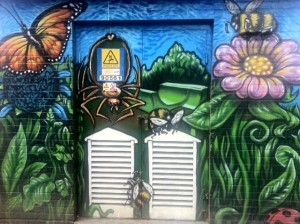
I’ve fond memories as a child of lost time spent doodling and colouring in colouring books. Colouring books were a regular feature in my family of origin. They’d find their way into bags and the back seats of cars on our way to church on Sundays and keep us children occupied as the hours of the church service clocked up and our energies waned. Colouring blunted the boredom of the ranting church minister and I loved the focus and concentration that colouring offered and the resulting colour explosion was always delightful.
At an early age a certain kind of confidence emerged from taking a black and white illustration and becoming the curator and creator of its new colour makeover. Years later when I was mother to a young child colouring books became a staple play activity. As soon as her tiny fingers could hold a crayon and pencil securely my daughter learnt to colour. Aida would spend countless hours on our living room floor colouring away to her hearts content. And it was this same child some twenty something years later who handed me an exquisite colouring book at Christmas last year called, The Secret Garden: An Inky Treasure Hunt by Johanna Basford
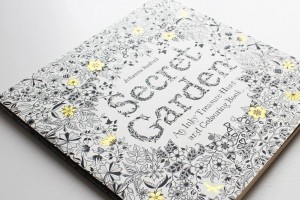
Turns out that Colouring books are back on the market aimed at adults in a big way. Remembering my own memories about colouring what I loved most was the simplicity surrounding the activity. It’s a relatively cost effective activity. It requires little instruction and no one telling you what colours to use whilst it gives the child or adult permission and freedom to pick and have their way with colours they personally want to work with.
There’s something grounding and calming about colouring inside the lines but also a certain wildness and liberation when we stray outside the lines. A positive colouring experience becomes an even more enjoyable activity once you have the right tools, which are minimum: a good, solid illustration to colour in and your pack of colouring pencils, crayons or felt tips.
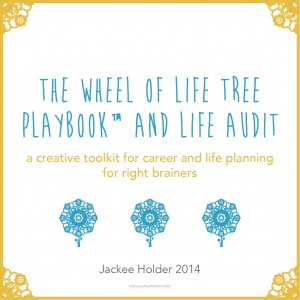
In 2011 I used this concept of colouring to design a coaching template designed to measure your overall satisfaction with your work and personal life. The Wheel of Life Tree Audit uses colouring to rate your levels of satisfaction across core life and work areas and then set goals to extend and improve satisfaction in key areas. I designed an activity that would engage both the right and left brains, one that would provide a colour snapshot of your life through the lens of colour. You can download the Wheel Of Life template here or the Wheel of Life Tree Playbook & Life Audit here or find a copy in my book Be Your Own Best Life Coach
Research is now bringing to light the many benefits of colouring already known in the alternative medicine world of colour therapy. Colouring reduces stress, the activity conjures up an almost Zen like mindfulness and working with certain colours can be soothing and calming.
Colouring is kinesthetic, a creative activity that moves the body and ignites the intricate and exploratory nature of the creative mind. I like the slow, gradual build up colouring brings to the page or an illustration. I enjoy the repetitive rhythm and the gradual, slow release of energy
Personally I’m drawn to the primal nature of colouring. Before most children experiment and learn to draw, they colour. Colouring predates drawing and writing. I use colouring now as a form of stress release but also as a working meditation. In a recent blog post creativity coach Jamie Ridler wrote about the additional benefits she derives from colouring and being creative, “Don’t be surprised if a sudden moment of clarity arrives while you’re colouring, doodling or beading.”
Being a writer I sit using words all day so an activity like colouring gets me to use my hands in a different kind of way. It breaks up routine patterns and ways of thinking. It gives my mind and thoughts breathing space to go in new and different directions. It’s possible to generate hits of dopamine when colouring in the same way we get that initial surge when we land on Facebook or other forms of social media or reach for that bar of chocolate.
Have fun with colouring. Notice that colours generated onto the page can extend into colours you wear, colours you notice other people wear and becoming more aware and present to the colours alive and visible in your environment and in nature.

Crayons are my favourite colouring instruments and have a smooth, effortless like movement across the page. Pencils are great but require greater pressure and attending to so make sure you have a sharpener to hand. Also be aware that pencil colour can sometimes be faint and watery like and not as bold and robust as the colour tones of crayons.
There are many different ways to have fun with colouring. From colouring books, to collages to taking photo’s of scenes with similar colours and tones. Having a range of great colours to hand helps when colouring. Using one colour can be extremely gratifying and helps to order the mind. And it’s worth remembering that colouring just for the sake of it can be a worthwhile reward and satisfying way of passing time.
No Comments
Saturday, August 1st, 2015

I love it when my schedule allows me to retreat for the day. Recently such an opportunity occurred and I found myself hanging out in one of my favourite, green spaces in London I love to escape to, Kew Gardens.
After treating to myself to a delicious lunch I wandered into a tree exhibition before deciding I’d had enough of walking the great stretch of land that makes up this huge green space and set myself down without much thought under the canopy of an enormous Cedar tree. I appreciate that Kew cherishes trees the way I and many others do and labels most of it’s tree stock with a small metal plaque with the trees name inscribed on it.
For the last twenty or so years I’ve developed a fascination for the stories, myths and legends about the trees we live and are surrounded by. So maybe it was not coincidence but more of an intuitive urge that drove me to sit and rest for a while under this particular tree. The last few months had been really busy and I was feeling emotionally and physically spent.
The Cedrus Atlantica towering above me was regarded as the world tree and in Greek mythology is home to the god of wisdom. Energetically the tree is associated with grounding and helping one to get rooted the very quality I was in desperate need of. And perhaps in that moment my own body wisdom knew what I needed and energetically what the tree would recharge me with.
The myths and legends and very often the spiritual and energetic associations of many of the trees you walk or drive past everyday may surprise you. Through my interest and research I have learnt so much about the way in which trees are not just botanical specimens that are both of necessity for the survival of the human race, but are some of our oldest living monuments as well as beautifiers of our environments. Just imagine for a moment a street without trees and you have a landscape that feels as if something significant is missing.
I grew up in a suburb of London (West Norwood) that was once covered by the great North Wood, a natural Oak forest that covered most of the area and raised ground starting four miles south of central London. The most common association with the Oak, one of the oldest and longest, living trees after the Yew tree, is the quality of ‘strength’. This is the tree whose trunk my back longs to lean against when I need to be replenished or to connect with my own source of courage.
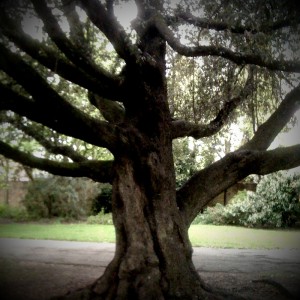
References to the Oak tree abound throughout the Bible and the Druids revered the Oak and honoured the sacred Oak grooves that once covered the land. Because of the deep roots of the Oak it is said to support with the well-being and healing of your feet. During one particular turbulent time in my life I sought out the daily company of a huge evergreen Oak tree in my local park. Her presence eased my pain and grief and watched over me as I nursed myself back to strength.
Most people will be familiar with the image of an overhanging Willow tree. The hanging, string like branches of the Willow tree is strongly associated with water and the flow of your emotions. Many Willow trees live on riverbanks and by water and hence it’s connection with tears and it’s ability to ease the pain of deep emotions. The Willow is considered as the poets muse because of the whisper like sound of its over-hanging leaves in the breeze.
Willow branches have a long cultural tradition of being used in funerals. Branches are placed in coffins and young plants, planted on graves. Across cultural traditions in Western Europe the Willow is regarded as a sacred tree. She is aligned with the moon and the tidal cycles. In North Western Europe the Willow was the tree wise women and healers turned to for it’s medicinal ability to ease rheumatism aggravated by damp conditions of the climate. And the Willow tree is considered to be the natural source of modern day aspirin.
I experience being in the company of trees as soothing and calming. I am comforted by the very existence of trees, one of the earth oldest living plant species. I love discovering new stories and legends about the trees we know and live with. If you want to learn more about the energetic characteristics of trees and how to be more closely connected with the trees in your neighbourhood there are plenty of great publications to turn to that make great summer reads.
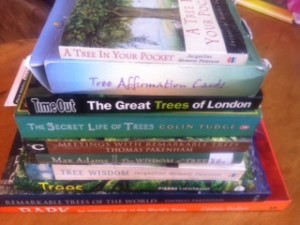
One of my all time favourite books is Tree Wisdom and A Tree In Your Pocket by Jacqueline Memory Paterson. Other tree books in my collection I’d recommend include:
- Meetings With Remarkable Trees and Remarkable Trees Of The World by Thomas Packenham
- Ancient Trees by Edward Parker & Amanda Lewington
- Bark: An Intimate Look At The World’s Trees by Cedric Pollet
- Trees: The Balance & Life Of Nature by Pierre Lieutaghi
- The Great Trees Of London by Time Out Magazine
- The Secret Life Of Trees by Colin Tudge
- Using The Wisdom Of Tree Oracle Card deck by Jane Struthers
- Tree Affirmation Cards by Victoria Sofia Lewis
- The Wisdom Of Trees by Max Adams
No Comments
Friday, July 31st, 2015

I’ve fond memories as a child of lost time spent doodling and colouring in colouring books. Colouring book were a regular feature in my family of origin. They would find their way into bags and the back seats of cars on our way to church on Sundays and keep us children occupied as the hours of the church service clocked up and our energies waned. Colouring blunted the boredom of the ranting church minister and I loved the focus and concentration that colouring offered and the resulting colour explosion was always delightful.
At an early age a certain kind of confidence emerged from taking a black and white illustration and becoming the curator and creator of its new colour makeover. Years later when I was mother to a young child colouring books became a staple play activity. As soon as her tiny fingers could hold a crayon and pencil securely my daughter learnt to colour. Aida would spend countless hours on our living room floor colouring away to her hearts content. And it was this same child some twenty something years later who handed me an exquisite colouring book at Christmas last year called, The Secret Garden: An Inky Treasure Hunt by Johanna Basford
Turns out that Colouring books are back on the market aimed at adults in a big way.

Remembering my own memories about colouring what I loved most was the simplicity surrounding the activity. It’s a relatively cost effective activity. It requires little instruction and no one telling you what colours to use whilst it gives the child or adult permission and freedom to pick and have their way with colours they personally want to work with.
There’s something grounding and calming about colouring inside the lines but also a certain wildness and liberation when we stray outside the lines. A positive colouring experience becomes an even more enjoyable activity once you have the right tools, which are minimum: a good, solid illustration to colour in and your pack of colouring pencils, crayons or felt tips.
In 2011 I used this concept of colouring to design a coaching template designed to measure your overall satisfaction with your work and personal life. The Wheel of Life Tree Audit uses colouring to rate your levels of satisfaction across core life and work areas and then set goals to extend and improve satisfaction in key areas. I designed an activity that would engage both the right and left brains, one that would provide a colour snapshot of your life through the lens of colour. You can download the Wheel Of Life template here or the Wheel of Life Tree Playbook & Life Audit here or find a copy in my book Be Your Own Best Life Coach here
Research is now bringing to light the many benefits of colouring already known in the alternative medicine world of colour therapy. Colouring reduces stress, the activity conjures up an almost Zen like mindfulness and working with certain colours can be soothing and calming.
Colouring is kinesthetic, a creative activity that moves the body and ignites the intricate and exploratory nature of the creative mind. I like the slow, gradual build up colouring brings to the page or an illustration. I enjoy the repetitive rhythm and the gradual, slow release of energy
Personally I’m drawn to the primal nature of colouring. Before most children experiment and learn to draw, they colour. Colouring predates drawing and writing. I use colouring now as a form of stress release but also as a working meditation. In a recent blog post creativity coach Jamie Ridler wrote about the additional benefits she derives from colouring and being creative, “Don’t be surprised if a sudden moment of clarity arrives while you’re colouring, doodling or beading.”
Being a writer I sit using words all day so an activity like colouring gets me to use my hands in a different kind of way. It breaks up routine patterns and ways of thinking. It gives my mind and thoughts breathing space to go in new and different directions. It’s possible to generate hits of dopamine when colouring in the same way we get that initial surge when we land on Facebook or other forms of social media or reach for that bar of chocolate.
Have fun with colouring. Notice that colours generated onto the page can extend into colours you wear, colours you notice other people wear and becoming more aware and present to the colours alive and visible in your environment and in nature.
Crayons are my favourite colouring instruments and have a smooth, effortless like movement across the page. Pencils are great but require greater pressure and attending to so make sure you have a sharpener to hand. Also be aware that pencil colour can sometimes be faint and watery like and not as bold and robust as the colour tones of crayons.
There are many different ways to have fun with colouring. From colouring books, to collages to taking photo’s of scenes with similar colours and tones. Having a range of great colours to hand helps when colouring. Using one colour can be extremely gratifying and helps to order the mind. And it’s worth remembering that colouring just for the sake of it can be a worthwhile reward and satisfying way of passing time.
No Comments
Thursday, July 9th, 2015
Foluke Taylor attended our Greece Writer’s retreat in June 2015 and took up the offer to share her experience here on the blog. It’s timely given what’s going on in Greece right now to recall the wonderful experience we had nestled into the mountainside of the great Mount Pelion for a whole week focused on our writing.
Foluke’s transformation during the week was like watching the eruption of Mount Pelion, she gave herself wholeheartedly over to her writing. Read her story in this week’s guest blog post.

Before I arrive at the writer’s retreat on Mount Pelion I think a lot about sun and sea and about how, once the morning workshops are over, I’m going to relax. I know it’s primarily a writing workshop but I refuse to feel guilty that writing isn’t at the top of my list. It’s been a tough year and I’ve survived. I deserve relaxation and that’s what I’m going to have. Once I’ve booked the trip, I develop a mantra to carry me through the weeks of waiting – Sun, sea, sleep. Sun, sea, sleep.
As the date gets nearer a handwritten card arrives from Jackee, the workshop leader. It’s decorated with butterflies. She asks me to let her know what I want from the retreat and to identify my specific writing goals. I send back my mantra (sun, sea, sleep) and because I don’t want her to think that I’m not taking this seriously, I add that I’d also be happy to write something as well. I’m careful not to say exactly what that something might be.
I give myself a pat on the back for managing expectations – for snapping some reins on those butterflies before they can get carried away. I sound cynical but know that in truth I’m just being realistic. Anyone expecting transformation in this situation is simply headed for disappointment. Transformation and disappointment are both on a long list of things that I’m way too tired for.
A few days prior to departure Jackee emails with last minute instructions and to suggest some writing practice in preparation for the retreat. My preparation involves throwing a bathing suit, sunglasses, flip flops and a couple of holiday reads into my suitcase and shaving my legs. I have my laptop with me, as a writer should, but inside I know that this is more about Netflix than anything else. I’ve yet to watch the new season of House of Cards. It’s not until I hit the departure lounge at Gatwick that I decide to pop into WH Smith and buy a notebook and pens.
Twenty four hours later and here I am, on the afternoon of day one, floating in the crystal clear waters of the Aegean Sea, gazing up at the mountain, soaking up the sunshine as planned. Suddenly I’m not tired anymore and I can think and all I can think about is writing. The first morning workshop has left me buzzing with ideas – what I want to write, what I need to write, how excited I am about writing it and when exactly I can get started. I feel like I need to start now.
So, that dip in the water ended up being my first and last, not because it wasn’t divine – it was, totally – but because another road to recovery had opened up before me. A road called writing myself back to life.
Each morning we’d wake up to birdsong, stunning views and a nourishing al fresco breakfast. Afterwards we’d come together in our writing circle and find that Jackee – the writer’s Mary Poppins – had pulled yet more, lovingly prepared materials and thoughtful activities from her bag. Our writerly selves received stimulation, nourishment and support in abundance. Where I’d imagined that I would be reluctant to ‘work’ and craving time on the beach, I found in fact that I relished the spaces to write, reflect and share. More importantly I found that, far from adding to my weariness, the process of writing energised me until I hardly recognised myself.

I wrote more in those six days than I had in the whole of the previous year and was especially delighted (and surprised) by what I was able to produce in the 24-hour period of the retreat during which we remained in silence.

I feel very blessed to have been a part of this retreat and I’m thrilled to be able to say that I’ve made significant progress with a writing project that had been stalled for some time. It’s part of this project that I would like to share here (thanks for the invitation Jackee) in a short story/chapter titled ‘The Stain’ you will find over at my blog here https://foluketaylor.wordpress.com/short-stories/the-stain/
The writer’s retreat dates set for 2016 ( June 3rd –June 10th 2016), are already ear marked in my diary. Thank you Jackee for channelling your experience, industry, humour and wisdom into such a wonderful week. I would recommend the retreat to anyone (and everyone), but a particular shout out to people who write or who think about writing or who like me, are sometimes too tired to think or write. I’d just like to add, in case you’re wondering, that the sunshine was also glorious.
Foluke Taylor is an Independent Social worker Counsellor/Psychotherapist BACP Accredited, DipSW and prolific writer who you’ll be hearing more from in the coming months.
Email foluketaylor@me.com
Contact: UK 07450 051 155
No Comments
Thursday, July 9th, 2015

Fire Well: How To Fire Staff So They Thank You For It, is a new book published today by Sue Ingram. I’ve had the pleasure over the years of working with Sue in our respective roles as coaches and coach trainers.
Sue was one of my first coaches here in the UK and since then has gone on to carve out a niche in supporting and inspiring teams with sustainable tools and techniques which help in making those difficult conversations easier.
Sue has written this week’s guest blog post answering a question I posed to her about sharing with us how a journal can help with having those difficult conversations in the first place.
I’m just heading off to Sue’s book launch this evening for the new book Fire Well: How To Fire Staff Well So They Thank You published by ReThink Press which shows how difficult conversations can be easy, straightforward and generous to complete. So I’m looking forward to having an actual print copy in my hand.
In the meantime why not have a read of what Sue has to say about how journaling can make the process of having those difficult conversations easier.
Difficult conversations are tough, be that at work, at home or in our friendships. And the name does help; difficult conversations. It sets the expectation that this conversation is going to be difficult to complete and difficult to gain a positive outcome.
However, I believe they’re not difficult. Sure, they take time to plan and you need to take care in delivery, but actually they’re essential conversations to hold for the health of our relationships, self-esteem and very soul.
They’re also generous conversations to give to others as often people are in the dark about the difficulties they are contributing to and certainly cannot change and improve without someone caring enough to hold the conversation with them. You could change their life for the better in many ways. And journaling is a very valuable tool to help us say what needs to be said.
For a start, if you journal every day you can look back over your entries and notice whether a relationship is in trouble. Is there a pattern of you feeling negative and irritated whenever you meet them? Are you repeating yourself about difficulties you’re experiencing? This is a strong sign that, although no big, isolated incident has occurred, there’s something significantly wrong that needs addressing.
The next is the value of writing out exactly how you feel about the situation and the person. No-one else will read this piece so you can be very open, free and explicit in what your actual feelings are. In fact it is very important that you are. Your writing may include swear words, accusations and some very hard things that you would never directly say to any person. But it is extremely beneficial to express all of these emotions out in the safe space of your journal. From your explosion of writing you will gain three things.
- One calmness and a distance to be able to assess the situation from the outside looking in, you may learn something new or be able to join dots together.
- The second is the essential truth that needs to be communicated, just put in better and more polite language.
- And the third is a one sentence statement that sums up how you truthfully feel regarding the situation. People can dispute facts and interpretations but they can not dispute how you feel. Also if you introduce feelings into a conversation it allows the other party to share how they might be feeling which could start to explain a lot of things.
For the best chance of a positive outcome from such a conversation it is important be calm and objective throughout. And journaling will help you maintain this grounded state, continue to reflect upon your feelings, the message you want to communicate and, lastly, the most important of all, the outcome you are wanting to achieve.
For the best chances of success this should to be a positive win-win outcome for you both, even it if is to end the relationship as amicably as possible. Define this and hold this in your mind throughout the conversation and your chances of achieving such an outcome are greatly increased.

Sue Ingram has spent over 27 years working in HR and related fields. In 2000 she became one of the UK’s first Executive Coaches; she is an Honorary Teaching Fellow at Lancaster University where her workshop forms part of their International MBA program.
Her workshop, How to Fire Staff so They Thank You has been delivered to over a 1000 managers in the both the private and public sectors. Her company Converse Well was created in 2010 in order to train and support managers in managing their difficult staff.
Sue Ingram
www.conversewell.com
sue@conversewell.com
+44 (0)7734 944515
No Comments

